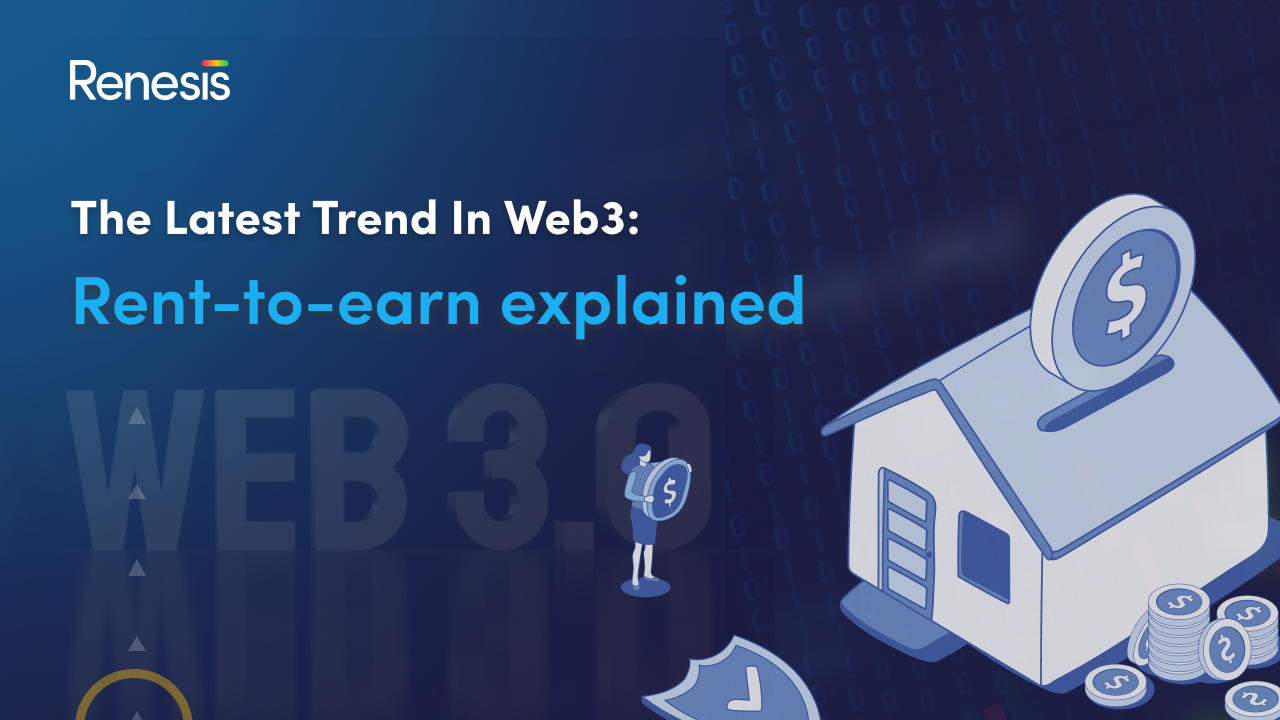The Latest Trend In Web3: Rent-to-earn Explained
Right now, there’s an interesting new trend in the blockchain gaming space. The rent-to-earn concept has attracted the attention of a number of game providers under this title and they’ve been showing off their commitment to their audience, while also empowering players to actively contribute to the advancement of the overall gameplay experience. Rent-to-earn is when you rent something in exchange for earning future earnings.
In an environment where a lot of firms have already been experimenting with this concept and it’s become a “pony” in the blockchain world, we decided to explore what rent-to-earn will mean for Web3 gaming development, getting into the nitty-gritty details of the concept.
We’ll take a look at how companies are building their own versions of rent-to-earn systems. First, let’s define rent-to-earn.
What is rent-to-earn?
Rent-to-earn is a new way of thinking about cryptocurrency. It is quite easy to understand how rent-to-earn works. Basically, it works like renting in the real world. A participant buys assets that are included in the game and rents them out to others. It also makes it easier for those who can’t afford to purchase gaming items outright to learn how to play.
The beauty of this concept is that you don’t have to spend any money upfront to get started. You can make money renting out your game assets, and earn rewards in return by doing what you already love — whether it’s programming, designing, or game assets.
Before beginning the game, the player must purchase a character and weapon. The character has a set of abilities that can be used to help win the game, and the weapon is needed to attack opponents. Let’s say a player starts with free in-game assets. Their disadvantage is that they aren’t powerful enough to progress beyond the first level. Both cases require the player to purchase some game items. In addition, just like in reality, scarcity has an impact on pricing.
Items in games that are on the blockchain are usually non-fungible tokens (NFTs). People are willing to pay a high price for an NFT because of its rarity. If there are only a few in existence, it becomes more valuable. These costs can impose a significant barrier to entry for new players. Due to the rent-to-earn system, the barriers to entry are lowered.
You don’t have to buy when you can rent
This may sound like an oxymoron, but there are plenty of reasons why people choose to rent over buy. For one thing, renting has become more popular than ever before in recent years due to the cryptocurrency boom. This means that there are now more people looking for ways to get their hands on some free cryptocurrency than ever before!
Another reason why people choose to rent over buy is that they don’t want to give up any of their privacy. When you rent from a website like ours, you can be sure that we will only store your information securely and won’t share it with anyone else without your consent.
Rather than buying them, players can rent NFT gaming items and pay lenders a percentage of their earnings in the P2E ecosystem. The P2E ecosystem is a platform that allows players to rent NFT gaming items from lenders. Lenders are able to set the price for renting their NFT gaming items, and players can choose to rent items from multiple lenders.
Rent-to-earn could be the next big thing in blockchain gaming because both sides benefit from the transaction.
Examples of other uses
The other type of rental is digital land plots, in addition to in-game assets like weapons and skins. By investing in digital property within P2E games, virtual landlords can make a profit by renting them out to players. If there are ways to make money from playing games on a blockchain platform, it could entice more people to join even if they don’t have much money to start with.
In addition to gaming scenarios, rent-to-earn has other uses. The rent-to-earn model can help kick-start digital art installations and exhibitions by showcasing inventive new art. NFT galleries could also hold events with rental pieces showcased for a limited time. As this model evolves, more users won’t get confined to buying and selling NFTs. They can profit by becoming a digital landlord or a lender of digital art.
In conclusion, rent-to-earn solutions can help reduce entry barriers in sectors such as Web3 gaming. In addition to responding to user demands, they can educate new market participants in order to build trust. By attracting more investors and bringing in new opportunities for gamers and NFT holders, such rentals may boost the NFT and GameFi space specifically.










